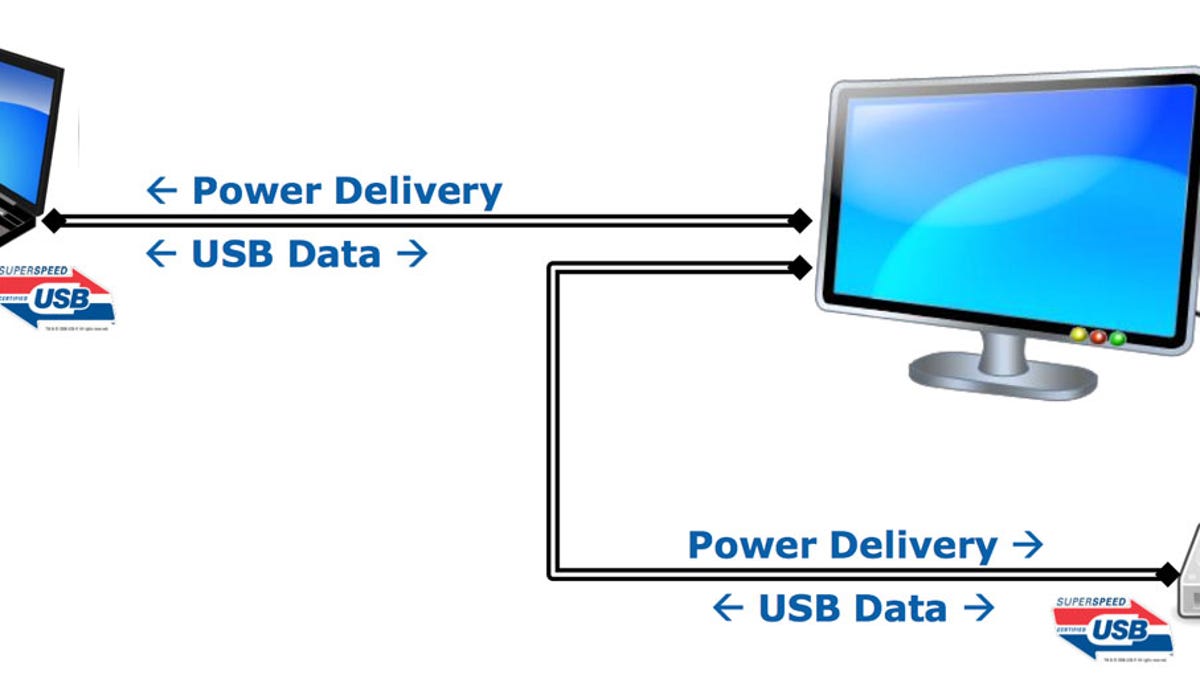USB cables could power PCs, peripherals
A higher-wattage variation of USB means you could use it to charge your laptop, not just your phone. The first devices supporting the standard could arrive this year.

Today, you likely charge your phone with a USB cable. Tomorrow, you might well use one to charge your laptop and other devices.
With a new Universal Serial Bus technology called Power Delivery (USB PD), Intel and its allies hope the ubiquitous cable will become even more widespread. "One USB cable does it all," said Brad Saunders and Bob Dunstan, two Intel architects in a presentation at the Intel Developer Forum in San Francisco this week.
USB 2.0 can carry 2.5 watts of power. USB 3.0, which is just catching on now, can handle 4.5 watts. Today's USB technology also includes a battery charging variation, USB BC, that can handle up to 7.5 watts.
But that's peanuts compared with USB PD. It's got profiles for 10W for handheld devices, 18W for tablets and most peripherals, 36W for thin laptops and bigger peripherals, 60W for larger notebooks and docking stations, and 100W for workstations. Devices using the protocol negotiate beforehand to make sure the cable can handle the power.
Intel allies have been touting USB PD for months, but the USB Implementers Forum, a consortium that oversees the standard, only finished the standard in July. The USB Implementers Forum expects (PDF) the first USB PD devices "towards the end of 2012." Forum members promoting USB PD are Hewlett-Packard, Intel, Microsoft, Renesas Electronics, ST-Ericsson, and Texas Instruments, while Nokia has endorsed the technology.
If USB PD catches on, it could mean that a lot more than phones and tablets could draw power from USB cables plugged into wall sockets via USB. With the USB PD standard, wall-mounted charging stations can be relatively simple devices that only need to know how to transfer power. They don't need chips designed for USB data communications.
"This enables battery chargers to become more universal by supporting the charging of higher-power devices such as tablets, notebooks, and other consumer-oriented battery operated devices," Saunders and Dunstan said in their presentation.
It also could mean a harder time for rival connection technologies such as Intel's Thunderbolt. Though Thunderbolt is significantly faster, USB can be expected to be just about everywhere -- and USB PD could increase that utility yet again.
USB allies are also working to extend the technology in other ways. The group has defined new categories of USB devices for mobile broadband devices such as 3G dongles and for audio and video devices such as monitors and projectors.

